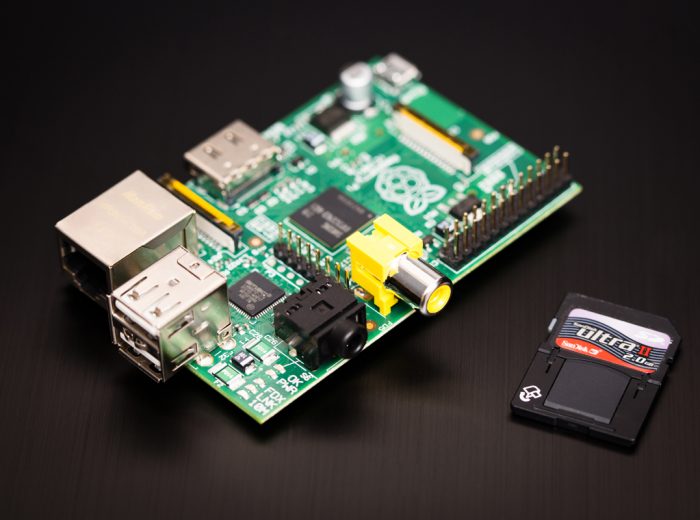Smart textiles, drones, robots, computers, homemade wearables, the Internet of Things… Since Chris Anderson coined the term Do It Yourself (DIY) in 2010 in his article ‘In the next industrial revolution atoms are the new bits’, published in Wired magazine, many projects have been launched by open hardware, open source and crowdsourcing enthusiasts. Anderson described it then as the new industrial revolution; now, almost four years later, that definition doesn’t seem poetic madness.
The DIY movement has always been linked to the creation of parts or devices aside from the major technological firms, who fight to control the patents. DIY brings together entrepreneurs and developers who use open source materials for their own technology. However, some companies like Microsoft or Intel, attracted by this new line of business, are trying to compete in the market of low or medium price hardware.
The embryo of the movement was the Arduino platform for open source, a motherboard with a microcontroller and its own development environment (Processing/Wiring programming language and a bootloader), which can support a wide variety of entrepreneurial technology projects. It is the most known and used, but it is not the only alternative within a market that is constantly growing.
Raspberry Pi, BeagleBone, Sharks Cove, Minnowboard MAX, Nanode, Waspmote or LittleBits are some of the most interesting alternatives to Arduino. Clearly, Arduino and Raspberry Pi are the ones receiving the most attention within the community of software developers. And that is reflected in Google Insights’ most important trends.
Raspberry Pi, a British low-cost minicomputer
Raspberry Pi is a low cost Single Board Computer (SBC) developed by the British Raspberry Pi Foundation. It has a System-on-a-chip Broadcom BCM2835, with a 700 MHz central processor, a graphics processor (GPU) and a 512 MB RAM memory. Raspberry Pi has no hard drive (it uses a SD card) or power supply. The Model B, the most complete version, is sold since February 2012 and the model A, since February 2013. Its price is around 35 dollars.
This minicomputer, with a size of 8.5 x 5.3 cm., has several input and output ports: two USB, one Ethernet and one HDMI. Thanks to them, it can connect to other devices such as a keyboard, a mouse, a computer screen or a TV.
This board can be used for many different projects: create an alternative WiFi access within a home or an office (this tutorial shows you how to do it); design a touch screen for the car to play music, videos or manage your files; or even customize the ‘soul’ of a robot.
BeagleBone, a microcomputer for 89 dollars
BeagleBone has an ARM A8 cortex 700 MHz processor and a RAM memory of 256 MB. It measures 9 cm long and 5.5 cm wide, it reads microSD cards, has a USB port for connecting a peripheral or use it as a source of energy, a micro USB to connect to another computer, an Ethernet connector and a RJ45 connector. There are currently two models: the Classical BeagleBone, for 89 dollars, and the BeagleBone Black, a bit cheaper.
As BeagleBone works with Linux, any developer can create its own software in a variety of languages: C, C ++, Java, Python, Ruby, PHP, Javascript, Node.js… It is also compatible with other operating systems such as Android, Ubuntu or Debian. Therefore, its possibilities are huge.
– Temperature sensor
– A spider-robot
Sharks Cove, the alternative of Microsoft and Intel at a higher price
The Sharks Cove board is designed to develop hardware for Windows and Android. It has a 1.33 GHz processor, so it is more powerful than other options such as Arduino and Raspberry Pi. It has a RAM of 1 GB, a flash storage of 16 GB, and a microSD reader. Its price is 300 dollars.
Obviously, trying to compare Sharks Cove with other cheaper options would be a mistake. A board such as Raspberry Pi is designed for independent hardware development projects, while Sharks Cove intends to be an option for businesses and professionals aiming to develop software for Windows or Android devices and System-on-a-chip projects. This is the Sharks Cove developer guide.
MinnowBoard MAX, the low-cost option of Intel
Intel and the CircuitCo launched in 2014 the second version of its MinnowBoard for 99 dollars. It has an Intel Atom 64-bit processor of 1.46 GHz and a RAM memory of 1 GB. The MinnowBoard with 2 GB of RAM costs 129 dollars. As it is open source hardware, all the design files are licensed under Creative Commons. In the MinnowBoard YouTube channel you can see several videos about its use in robotics.
Nanode: try the Internet of Things
Nanode is a project of open source hardware which, among other uses, includes solutions for the Internet of Things. It is the work of Ken Boak, within the framework of London Hackspace, a developers’ community where ideas and tools are shared. Nanode is an evolution of Arduino, but capable of connecting to internet through a browser or an API.
Nanode allows any developer to use it as his private server of web projects, as a connection to other devices or collecting environmental data through the placement of sensors. A well-known example of its use is an experiment carried out by Nat Morris, who was able to feed his dog remotely through a connection with Twitter. You can see it in this video:
Waspmote, a network of wireless sensors
Waspmote is also one of the most powerful options to connect devices or collect data with sensors. Its creator is the Spanish startup Libelium, based in Zaragoza, dedicated primarily to the IoT, Smart Cities and M2M (machine to machine) solutions. Waspmote has countless practical applications: for measuring the levels of pollution, noise pollution or nuclear radiation; for forest fire control; for the optimization of waste collection services; and for the management of car parks and agriculture fields.
LittleBits, an electronic meccano
LittleBits is a kit containing a battery, light or motion sensors, light or sound sources, buttons, cables, engines… The idea is that, as these pieces can be assembled using magnets, any hardware fan can design his own projects.
There are hundreds of videos that demonstrate its utility to design textiles with moving lights, control the security of a safe, alert about the activity of a device such as a TV or a computer, connect home appliances through a smartphone… and all this in a simple way.
This open source hardware frenzy allows almost anyone to experiment with the design of improvised wearables or the Internet of Things at home. Furthermore, it can be a fun way to teach children electronics or to engage elderly people to new technologies.











